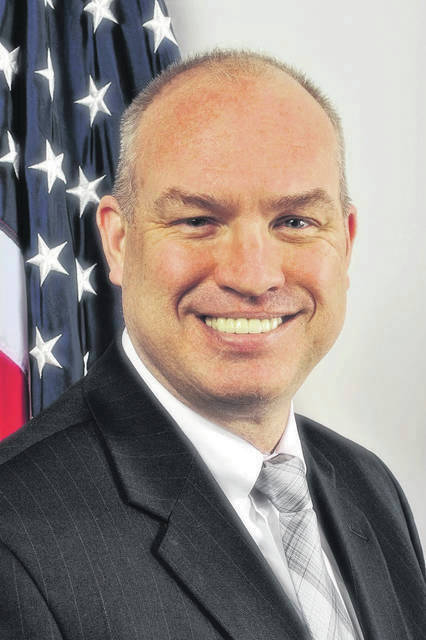

SIDNEY — For the Sidney Police Department, use of body cameras has become an effective tool in day-to-day interactions officers have with the public.
“My staff has really supported using the body cameras — we’ve seen there’s less use of force cases with the body worn camera. You could say it’s one of two ways, depending on which way you look at it: that officers are more aware of having them on, but also the public seems to be less aggressive, both verbally and physically, with the officer when they know they’re being taped,” Sidney Police Chief William Balling said.
The Sidney Police Department has been utilizing body cameras since 2017, and in that time, Balling said that the department has seen a reduction in the use of force, which he says makes his staff’s job better. Currently, whenever a patrol officer is out in the community, they are wearing body cameras and are required to turn them on whenever they interact with a civilian. All body camera footage has to be logged in the system under one of several categories. Once videos are logged, the court can request videos if there is a case connected to the footage. Balling said that, due to cost and storage, the only personnel that doesn’t utilize body cameras is administration. Despite this, the department still creates a large amount of videos daily.
“Every officer creates anywhere from 15 to 20 videos a day, with just public contacts. You times that by all of our officers yearly, there’s a lot of videos coming through our department,” Balling said.
Additionally, footage from body cameras has become a training tool within the department. The department will pull videos from their officers at random on a monthly basis to make sure that they are providing the best service they can to the citizens. It has also helped with identifying officer safety issues and addressing those issues accordingly. Along with this, the department has seen an increased evidence collection with an accurate record of how interactions with civilians go.
One thing the body cameras have helped with, from the chief’s perspective, is looking into citizen complaints honestly and openly. From Balling’s perspective, it’s how the department as a whole can improve. When a citizen comes in with a complaint, the staff at the department listens and takes everything down, while informing the citizen that their interaction with an officer may be on recorded body camera footage.
“We’ll look at our body camera to see, is it matching up with what the citizen said happened at the scene,” Balling said. “The body-worn cameras can aid us in looking at a complaint fairly on both sides. If we need to do better on our end, we can use the body-worn camera to improve our services or follow up with that, or we can use it to disprove a citizen complaint.”
With the pros also come the cons; some downsides with the body cameras include the expense — there is a high initial cost for the equipment and also a yearly cost to maintain the program. According to Balling, the city had to invest in part time evidence coordinator to help manage the program along.
Additionally, there is some misbelief that body cameras will pick up everything; according to Balling, sometimes camera angles and timing factor into things not being picked up. There has also been over-reliance on cameras to substantiate belief that something happened, and the body camera program takes several hours a week to manage.
“There are many layers that must be addressed weekly. Between send the information to the court, managing redactions, and retention it is a time consuming process,” Balling said. “You have a lot of work on the back end part to manage the program.”
Despite the cons, Balling believes that it’s a small price to pay for the value that body cameras can bring to a department.
“When I talk to agencies, I try to go in and talk with them about both the pros and the hurdles you’ll have to overcome with them. I think the positives outweigh the negatives, but you have to have a good program set up and a good policy for what you’re going to do. I think overall, it’s been great for departments across the country and I have no hesitation with my officers having them,” Baling said.



